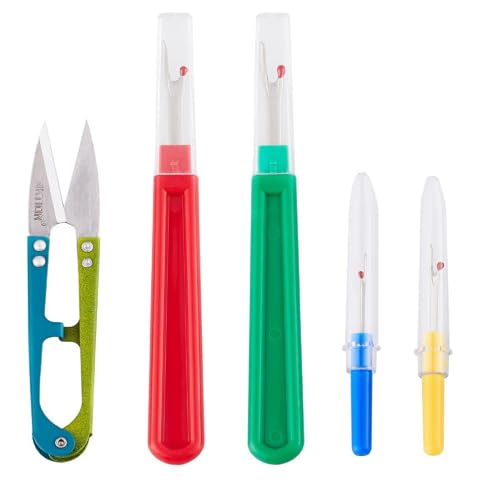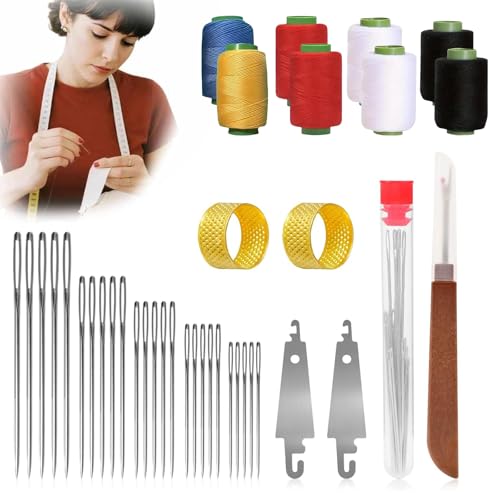Ready to elevate your sewing projects? A rotary cutter might just become your new best friend. Unlike traditional scissors, this handy tool slices through fabric with ease, making cutting faster and more precise.
Whether you’re a seasoned sewer or just starting out, mastering the rotary cutter can transform your crafting experience. You’ll enjoy smoother cuts, save time, and take your creations to the next level. From selecting the right blade to mastering cutting techniques, we’ll guide you through everything you need to know to make the most of this essential sewing tool.
Choosing the Right Rotary Cutter
Selecting the right rotary cutter enhances your sewing projects’ precision and efficiency. Understanding the available options ensures you pick the best tool for your needs.
Types of Rotary Cutters
- Standard Rotary Cutters: Feature a fixed blade suitable for straight cuts and basic curves. Ideal for general sewing tasks.
- Joggled Rotary Cutters: Equipped with a blade that follows a curved path, perfect for intricate patterns and curves.
- Brazilian Rotary Cutters: Designed with a longer handle for better leverage, making it easier to cut multiple layers or thicker fabrics.
- Pivot-Cut Rotary Cutters: Allow the blade to pivot for more precise cutting around corners and complex shapes.
Blade Sizes and Uses
| Blade Size (mm) | Uses |
|---|---|
| 45mm | Fine details, narrow fabric strips |
| 60mm | Standard sewing projects, quilting lines |
| 90mm | Large fabric sheets, straight cuts |
| 120mm | Thick fabrics, multiple layers |
- 45mm Blades: Best for detailed work and cutting narrow fabric pieces with high precision.
- 60mm Blades: Versatile for most sewing projects, providing a balance between control and coverage.
- 90mm Blades: Ideal for cutting large fabric sections quickly and efficiently.
- 120mm Blades: Handle thick or multiple fabric layers, ensuring clean cuts without excessive effort.
Choose a blade size based on your project requirements and fabric types to achieve optimal results.
Essential Materials and Tools
To maximize your rotary cutter’s effectiveness, gather these essential materials and tools. Each item ensures precise and efficient sewing projects.
Cutting Mat
A durable cutting mat safeguards your surfaces and extends your rotary cutter blades’ lifespan. Choose a self-healing mat with clear grid lines for accurate measurements. Opt for sizes like 18×24 inches to accommodate various projects. Ensure the mat has a non-slip surface to keep your fabric steady during cutting.
Rulers and Guides
Precision rulers and guides enhance your cutting accuracy. Use a clear acrylic ruler for straight lines and complex angles, aligning it with your cutting mat’s grid lines. Incorporate a curved ruler for intricate shapes and smooth curves. Magnetic rulers help secure fabric in place, providing stability and consistency in your cuts.
Preparing to Cut Fabric
Before you start using your rotary cutter, ensure your fabric is ready for precise cutting.
Measuring and Marking
Accurate measurements guarantee clean cuts. Use a clear acrylic ruler to measure your fabric pieces. Mark your measurements with fabric chalk or a washable marker for visibility. Align the ruler with your marked lines to guide the rotary cutter smoothly. For intricate patterns, consider using a tailor’s t-square to maintain straight edges. Double-check all measurements before cutting to prevent mistakes.
Setting Up Your Workspace
Organize your workspace for efficiency and safety. Place a self-healing cutting mat on a flat surface to protect your table and extend blade life. Position your rotary cutter within easy reach to maintain steady control. Ensure adequate lighting to see your markings clearly. Keep your fabric flat and smooth on the cutting mat to avoid uneven cuts. Arrange your rulers, markers, and other tools nearby to streamline the cutting process.
Techniques for Using a Rotary Cutter
Master various cutting techniques to enhance your sewing projects. Apply these methods for precise and efficient results.
Making Straight Cuts
Align fabric flat on the cutting mat. Position a clear acrylic ruler along the desired line. Hold the ruler firmly to prevent movement. Slice through fabric using smooth, continuous strokes. Replace the blade after every eight hours or when cutting multiple layers.
Cutting Curves and Angles
Select a flexible curved ruler for intricate shapes. Stabilize fabric with weights if needed. Guide the rotary cutter slowly around curves. Apply consistent pressure to maintain accuracy. Practice on scrap fabric to refine your technique.
Maintenance and Safety Tips
Proper maintenance and safety practices ensure your rotary cutter remains effective and safe to use.

Caring for the Blade
Regularly clean the blade after each use to remove fabric fibers and debris. Store the cutter with the blade retracted to prevent dulling and accidental cuts. Replace the blade every 12 hours of cutting or when it shows signs of dullness, such as tearing fabric instead of slicing. Use a blade storage system to keep blades organized and sharp.
Safe Handling Practices
Always cut away from your body to minimize injury risk. Keep the rotary cutter out of reach of children by storing it in a locked drawer or cabinet. Use a cutting mat to provide a stable surface and prevent slips. Avoid applying excessive force; let the cutter glide through the fabric smoothly. Unplug and store the cutter safely when not in use to ensure a hazard-free workspace.
Conclusion
Embracing a rotary cutter can truly elevate your sewing projects bringing speed and precision to your cuts. You’ll enjoy a smoother workflow and better results as you become more comfortable with this versatile tool. Choosing the right cutter and keeping it well-maintained ensures it stays a reliable part of your sewing kit. With the techniques you’ve learned and a bit of practice you’re ready to tackle any fabric with confidence. Dive into your next project knowing your skills have grown and your creations will shine. Happy sewing!

















